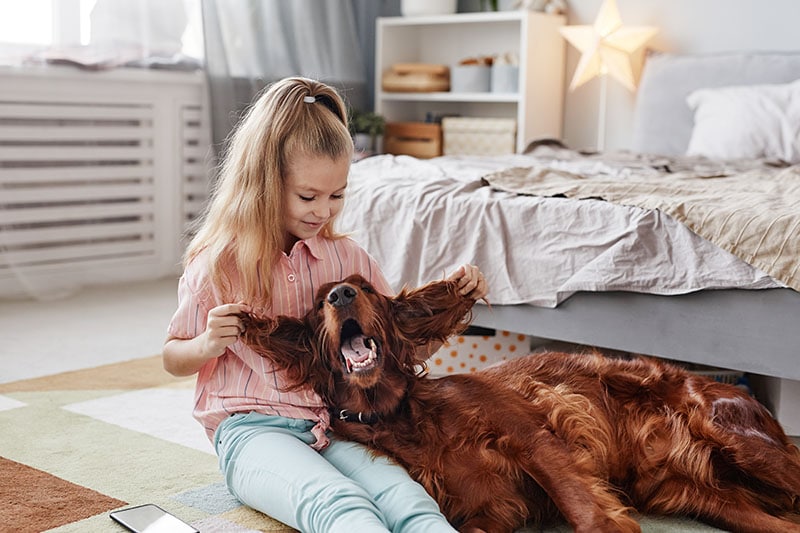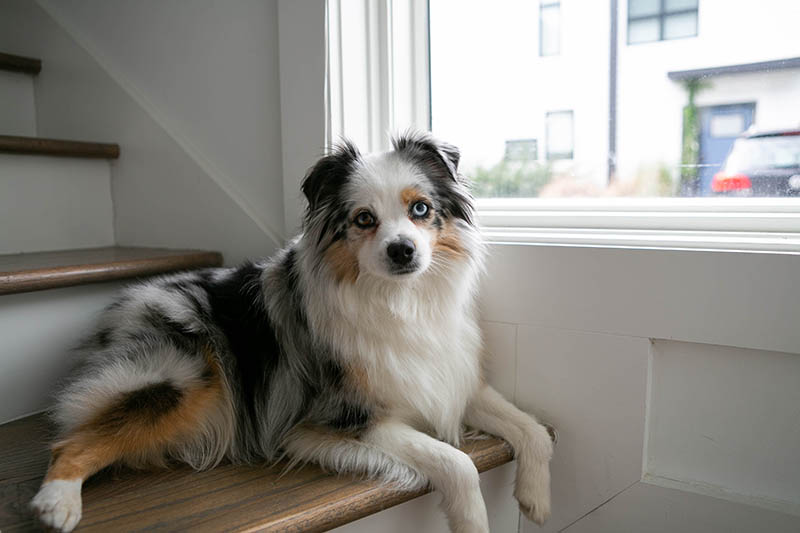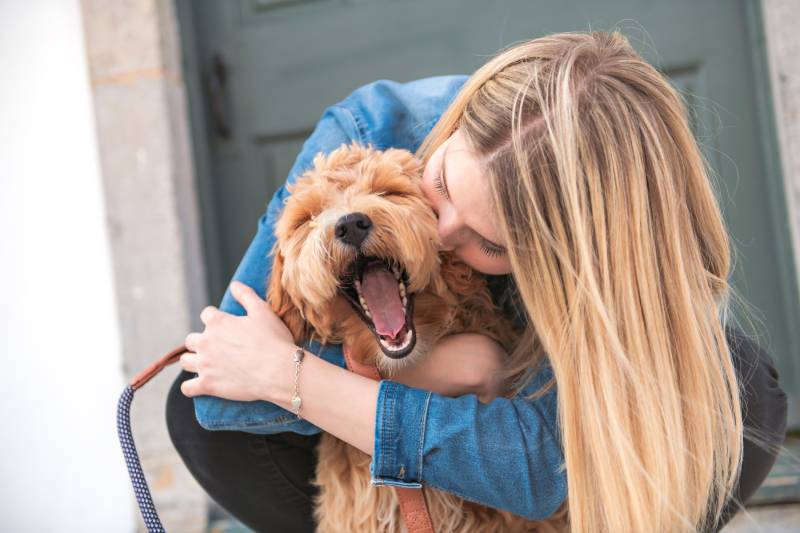Are Irish Setters Good Apartment Dogs? What You Need to Know

Updated on

Click to Skip Ahead
Elegant looks and a temperament as sweet as their face can make anyone fall in love with the Irish Setter. However, before adopting, assessing your situation will make the difference between an incredible experience and an overwhelming challenge. With their non-stop energy, living in an apartment with limited space is rarely a wise idea.
If you are set on a Setter, apartments can work but might require extra measures that may or may not be possible. Here’s a look at whether Irish Setters are good apartment dogs and what you can do to improve your dog’s chances of successfully making the move.
Are Irish Setters Good Apartment Dogs?
Irish Setters can be challenging dogs for an apartment due to their size and activity needs. The apartment size isn’t particularly significant, but you may have limited outdoor space to give them the exercise they need in a way that works for you. Walks often won’t cut it. These dogs like to run and can easily put in 5+ miles daily. Unless you have a fenced-in backyard, you could spend all day with them and still not tire them out enough.
Dedicated outdoor spaces for working out with your Irish Setter aren’t always available with an apartment. The alternative is a dog park or taking them on off-lead walks where your dog can run and explore while you follow at a comfortable pace. The dog park is a sensible idea, as they thrive on socialization and do well with other dogs. But getting them to return when playtime is over may not be the easiest task.
Irish Setters are independent and prone to taking off when something catches their eye, making recall a training challenge. They don’t do well off-leash and are difficult to corral, whether you’re on a rural hike or trying to leave the park.

Are Irish Setters Good While Left Alone?
Getting that energy out is crucial for keeping your dog content in the home and avoiding troubling behavior. An under-stimulated dog becomes bored, anxious, and testy. Though Irish Setters aren’t the most prolific barkers, they can engage in nuisance barking, vocalizing, and destructive habits when they don’t get the attention or activity they want.
In an apartment, that noisiness won’t win friends with neighbors. From a routine standpoint, considering your time away from the house will help you determine whether an Irish Setter is a proper fit regardless of where you live. They’re prone to separation anxiety, and if you leave them alone for more than a couple of hours, they’ll start to show signs of distress.
Can You Live with an Irish Setter in an Apartment?
An Irish Setter isn’t easy to raise in an apartment, but it is doable. To their credit, their outgoing nature and subdued barking tendency when well-tended mean they’ll rarely make a fuss when they hear odd noises from the random occurrences in the apartment building around them. If you can figure out how to satisfy their extreme activity needs, you and your neighbors may find the arrangement perfectly comfortable.
- Are fenced-in parks nearby where they can run off-leash without running away?
- How much time will your dog spend alone each day?
- Is there a dog walker or doggy daycare that can watch your dog while you’re gone?
- Do you have neighbors below you who may hear constant thumps and movement of your dog throughout the day?
Training, socialization, and daily enrichment are paramount to success. A comfortable dog will be calm and quiet, and frequent training will help subdue barking tendencies and other poor manners.

Enrichment Ideas for an Irish Setter
The most straightforward long-term solution for keeping an Irish Setter mentally engaged and happy is getting another Irish Setter, but that’s rarely a practical idea in an apartment or otherwise. To help your Irish Setter stay stimulated and relaxed, you’ll have to employ a mix of toys and playtime in the home.
Squeaky chew toys are excellent outlets to satisfy an Irish Setter’s urge to chew and keep them engaged for hours. Puzzle toys and Kongs are also great ways to slowly feed and treat your dog in mentally stimulating and challenging ways. Setting aside a few favorites to use only in the crate will also help them with training and staying content while you’re away.
While you are home, indoor play can further your bond and give your dog more diverse enrichment tools. A game of fetch may be a bit too loud for your downstairs neighbors. However, games of tug-of-war or hide-and-seek are easy activities you can fill in at your convenience that won’t cause issues in an apartment.
Consider an Older Irish Setter
Many of the challenges in owning an Irish Setter in an apartment occur at a young age. Some owners find their dogs begin mellowing out after about 2–3 years old. If you’re living in an apartment and considering an Irish Setter, check out local and online Irish Setter rescues for help locating a trained, mature dog.
A mature dog will help you avoid any surprising traits that may make a growing puppy incompatible with your apartment. Getting a puppy only to discover behavioral issues and unmanageable development is a bad situation for you and your dog. It’s a crucial consideration if you plan to stay in your apartment long-term.

Final Thoughts
An Irish Setter is always a commitment, even more so in an apartment. While keeping them satisfied and cooperative often takes extra effort (and sometimes more financial costs), it is possible if you consider your routine, your dog’s training, and the home’s access to areas where you can confidently exhaust your dog with exercise.
Featured Image Credit: Reddogs, Shutterstock










